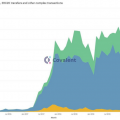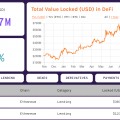Is the market in a bullish phase? At least Crypto Twitter certainly agrees on this, and with good reason.
For the second weekend in a row, we saw a BTC rally andETH, where they rallied to levels not seen since January 2018. DeFi tokens continue to show profitability at the ICO level, and you are likely to start receiving questions about Bitcoin from people with whom you have not spoken for a while.
Perhaps it is more appropriate to ask the question not about whether we are in a bull market, but about which phase of it?
@real_vijay:2020 is the new 2016, not 2017. Think about it.
But regardless of the phase of this bullish cycle, some points are in stark contrast to the 2017 bull rally.
Digital gold
First, now that the main digital asset withSurpasses gold and silver by a solid margin, and the narrative of Bitcoin as digital gold looks stronger than ever. Add to that the fact that the industry is now mature enough to accept institutional capital inflows and is increasingly difficult for professional investors to ignore, given that famous fund managers such as Paul Tudor Jones have already invested a "small one-digit percentage" in their management of funds into bitcoin futures.
In a recent episode of the Masters in Business podcastfrom Bloomberg, value investor and long-term holder of BTC Bill Miller did not fail to point this out too. In his opinion, since investors such as Ray Dalio and Stan Druckenmiller recommend buying gold amid the unprecedented release of money from the Fed, Bitcoin's profitability should be higher within 5-10 years.
And if suddenly the prospects to surpass profitabilitygold, public endorsement for Paul Tudor Jones, and the maturing infrastructure for institutional capital may not seem enough to get Bitcoin under the radar, then add two more giant factors: China's digital yuan and Facebook's Libra. On the one hand, one of the largest economies in the world is about to issue a government-backed digital currency, on the other, Facebook, with its 2.6 billion users, is launching an initiative to issue its own digital token. Given the general level of mistrust in both the Chinese government and Facebook, Bitcoin's position as a politically neutral, non-sovereign vehicle for storing and transmitting value appears to be more reliable than ever.
Will the listed factors be sufficient toattract the next wave of new investors? It’s impossible to say for sure right now, but it’s clear that even a very modest placement of institutional capital will be enough to push the price of BTC up to $50,000.
@RyanWatkins:What would happen if institutional investorstook Paul Tudor Jones's advice and put a "small single-digit percentage" of capital into Bitcoin? … The influx of capital would be measured in hundreds of billions, if not trillions, of dollars.
What about ETH?
While BTC is again starting to flash more frequently in the headlines of more mainstream publications, one cannot ignore thatthe fact that the main movement in the cryptosphere today is happening in one way or anotheraround Ethereum.
And while BTC has surpassed traditional asset classes, ETH has become the most profitable major cryptoasset in 2020.


An interactive chart is available here
Just as Ethereum and the ICO boom led (inpercentage) bull market in 2017, ETH and DeFi are again taking center stage in today's crypto market. The main difference between the 2017 ICO boom and the 2020 DeFi rush is that DeFi tokens are tied to protocols that actually work and can add value.
If 2017 was a hallmark of projects,attracting billions of dollars in funding, with nothing but a whitepaper, a catchy Internet page and the ability to show off, DeFi technologies are quite tangible and capable of making an impression.
@QWQiao:Uniswap trading volume over the past 24 hours was $126 million. This is 1/3 the volume of Coinbase, 1/2 Kraken and more than Gemini, Poloniex and Binance US combined. Impressive.
@ sassal0x:Total DEX volume for July was ~$4.3 billion. For comparison, total DEX volume for all of 2019 was ~$2.4 billion. DEX on Ethereum are growing parabolically.
As trading volumes increaseFor decentralized exchanges like Uniswap, 0x or Kyber, a whole layer of DeFi aggregators is emerging with a relatively simple interface that makes interacting with DeFi and Ethereum-based apps more accessible to the general public. Now try to imagine that Robinhood users will someday own a MetaMask wallet, and WallStreetBets [popular in the English-speaking reddit community] will notice the crazy profitability of some DeFi tokens.
In a world where the largest countries and companies are moving
Although ETH as an investment vehicle is not yethas penetrated the mass consciousness to the same extent as BTC, people are increasingly starting to pay attention to it. This is clearly evidenced by the words of the new chairman of the Commodity Futures Trading Commission (CFTC), Heath Talbert:
“Our entire financial and economic system, inessence, has developed and evolved since the Renaissance in Italy. Against this backdrop, what people have done in the last decade or less in the field of digital assets, actually building a new economic system based on human incentives and trust, is simply amazing. "
It is likely only a matter of time before others see DeFi's colossal potential, in all its speculative yet groundbreaking splendor.
Fasten seat belts
Despite the fact that more and more investors are against the backgroundWith unprecedented money printing in an increasingly digital world, digital gold is beginning to be viewed as a hedge against inflation, and innovation in decentralized finance continues to flourish, 2020 looks set to be a very exciting year for anyone connected or just following beyond the cryptosphere.
To quote Bob Dylan, it doesn't take a meteorologist to figure out where the wind is coming from.
</p>












